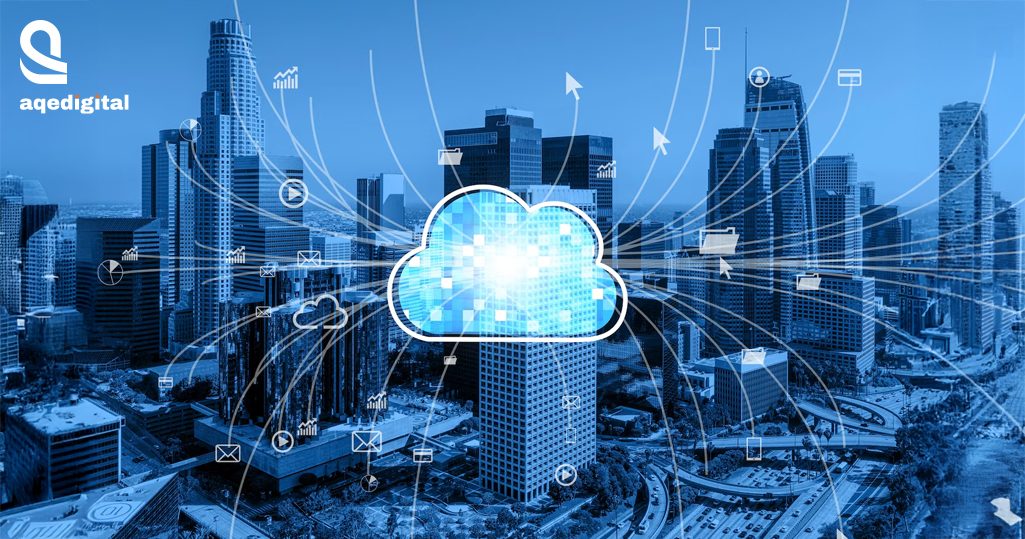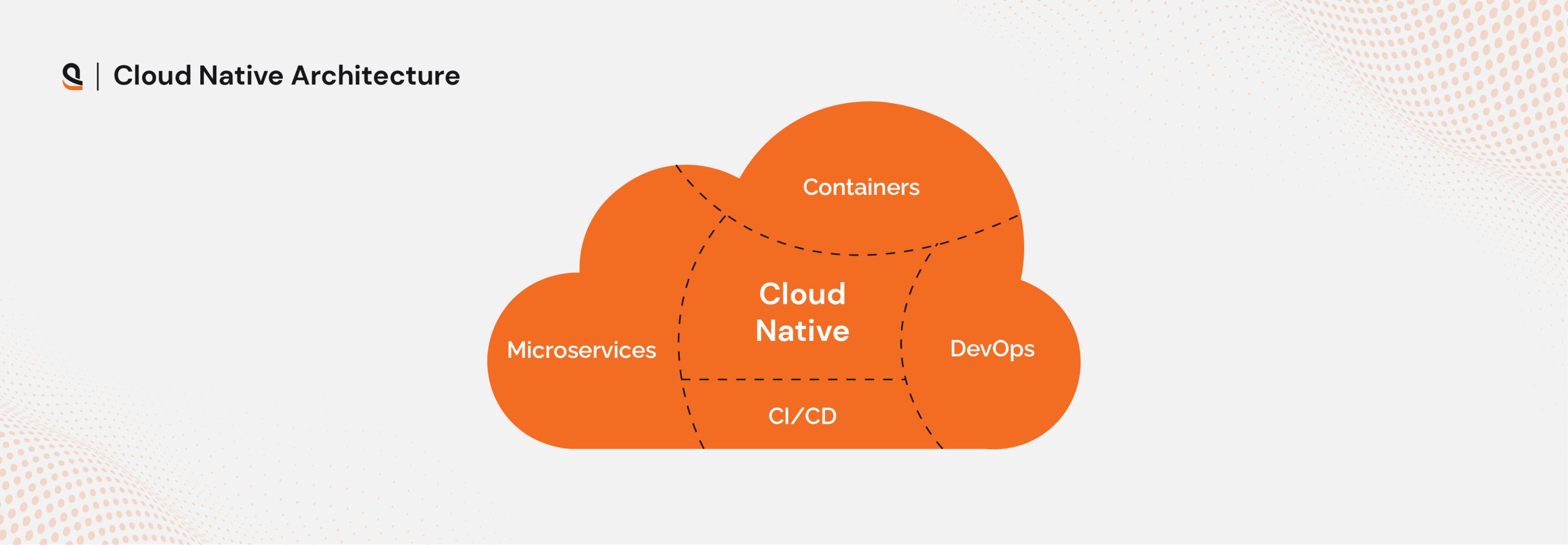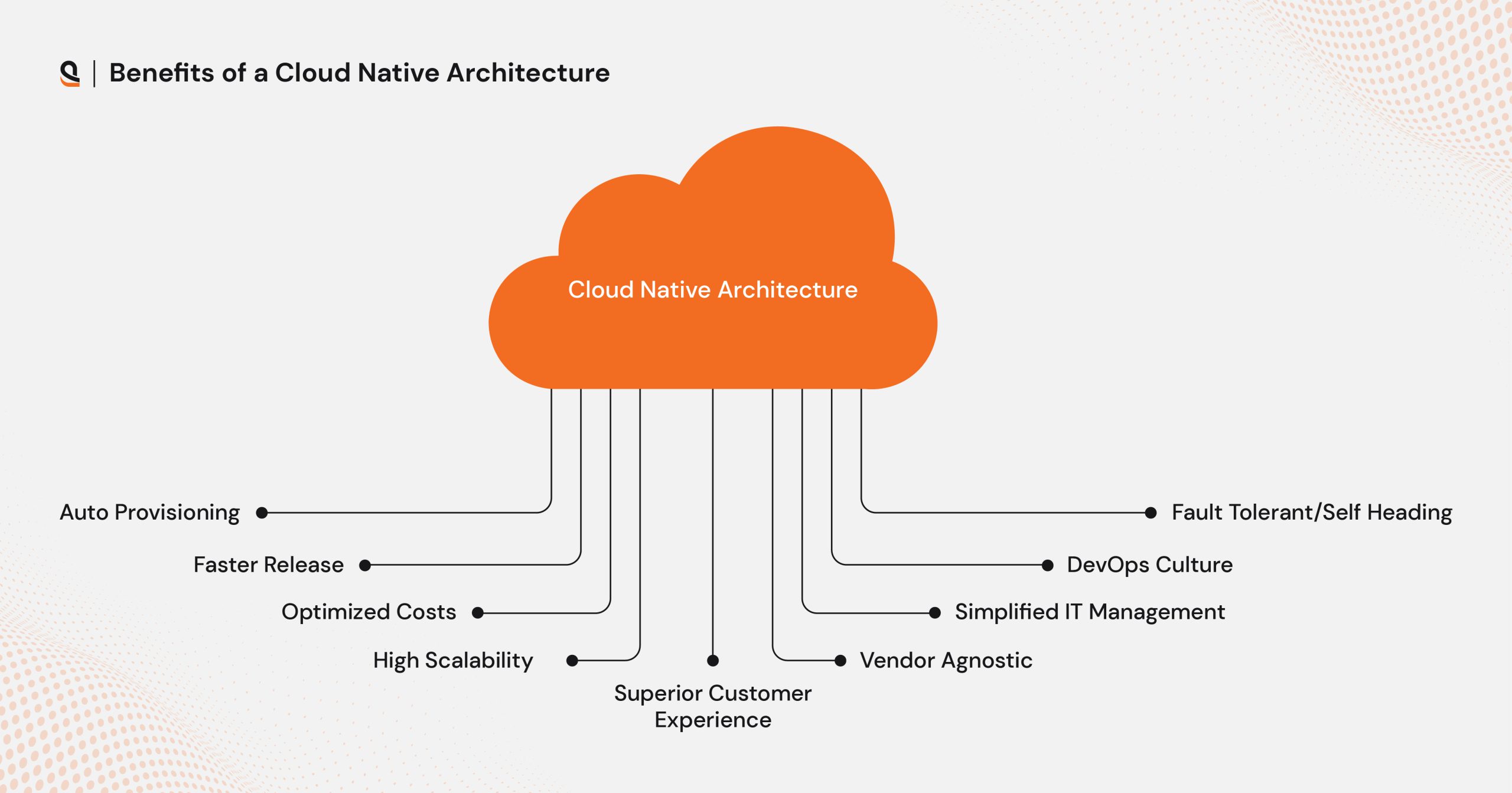Imagine scrolling endlessly through Netflix or Amazon Prime Video, unable to find a show that truly fits your taste—until one day, you’re recommended a series you love. Or consider searching for a pair of running shoes online, only to find ads for those shoes following you wherever you browse. Such recommendations and marketing, powered by intelligent algorithms, showcase how Artificial Intelligence (AI) enhances personalization and decision-making.

Now, pair this intelligence of AI with cloud-native technologies—a modern approach to building and running scalable applications that leverage the full potential of cloud computing. Cloud-native systems, built on microservices and distributed across public or private clouds, provide developers with on-demand resources, powerful frameworks, and global scalability.
This seamless combination of AI and cloud computing allows businesses to rapidly innovate, deploy, and optimize solutions at scale. Together, AI and cloud-native transformation are shaping a future where enterprises can harness the agility of the cloud and the intelligence of AI to deliver transformative experiences and bring new ideas to market faster than ever before.
AI and Cloud Computing Explained
AI and cloud-native technologies are profoundly intertwined as cloud computing has become the first preferred approach to embed AI into business applications and IT infrastructure. The merger of AI and cloud computing facilitated organizations to economically offer hyper-scale services to large-scale customers with better user experience and security.
Cloud-native application development integrated with AI helps enterprises leverage Machine Learning Models (MLM), Natural Language Processing (NLP), and Computer Vision without extensive in-house expertise. These architectures facilitate the collection and processing of massive volumes of data in real-time, with AI algorithms analyzing this data to extract actionable insights.
AI-cloud native apps have proven to be game changers with their capabilities to deliver better services. With the emergence of AI-embedded cloud, native technologies cloud computing providers managed to automate a wide range of operations in their big data centers by leveraging the decision-making capabilities of AI. The convergence of cloud technologies and AI drives digital transformation for businesses enabling better operational efficiency, productivity, innovation, scalability, and security. Furthermore, combining AI with cloud-native infrastructure enables the development of resilient systems that automatically identify and address issues, ensuring minimal downtime.
Why Is AI Important to Cloud Native Technologies?
Cloud-native technologies increasingly rely on AI to automate and optimize key operations, ensuring efficient delivery of applications and services at scale. AI enhances resource management, streamlines container orchestration, and fine-tunes microservices architectures, significantly reducing the need for manual intervention. As organizations embrace AI-driven solutions, including advanced capabilities like generative AI, cloud-native platforms are evolving to support these demands. This synergy positions cloud-native technologies as the ideal framework for integrating AI, enabling businesses to adopt cutting-edge innovations with agility and efficiency.
At the same time, cloud-native technologies are critical to the advancement of AI. Training complex AI models, such as large language models (LLMs), requires vast computational power and highly scalable environments. Cloud-native infrastructures, provide the necessary scalability and flexibility to handle all demands by leveraging containers, serverless computing, and distributed systems. The cloud-native platforms empower AI developers to train, deploy, and scale models effectively facilitating innovation and cost-efficiency by offering access to high-performance computing resources and GPU clusters on demand.
How Does AI With Cloud Native Technologies Transform Enterprises?
Integrating Artificial Intelligence (AI) with cloud-native architecture and applications drives innovation, enhances efficiency, and optimizes enterprise resource utilization. This integration of AI and Cloud Computing delivers scalable, resilient, and intelligent systems for enterprises leveraging containerization, microservices, serverless architectures, and machine learning. Below are the detailed subtopics illustrating this transformation:
Enhanced Scalability and Agility
Analyze usage patterns and workload requirements in real-time optimizing resource scaling by combining AI-driven tools like Kubernetes with AI algorithms. Enable faster adaptation to fluctuating workloads by deploying containerized AI models and micro-services with zero downtime. With such flexibility and agility enterprises can handle sudden traffic surges with AI-integrated cloud-native technologies. The powerful duo helps enterprises maintain seamless performance.
Advanced Data-Driven Decision Making
AI-driven cloud-native applications facilitate advanced data processing through the integration of data lakes and real-time streaming platforms. Such setups enable Machine Learning (ML) pipelines to get actionable insights from data of all types, whether structured or unstructured. AI-enabled predictive analytics helps enterprises identify trends, customer behaviors, and operational inefficiencies to make well-informed decisions.
Automation and Operational Efficiency
Cloud-native AI integrates with DevOps practices through AIOps (AI for IT Operations), enhancing CI/CD pipelines by automating testing, monitoring, and deployment processes. Combining AI-powered observability tools with ML capabilities helps businesses proactively detect anomalies, predict failures, and run an automated analysis with reduced manual intervention ensuring optimized performance.
Discover how we optimized food manufacturing workflows with advance cloud-driven automation.
Personalized Customer Experience
AI models deployed on cloud-native platforms leverage natural language processing (NLP) and real-time recommendation systems to deliver hyper-personalized customer interactions. For instance, serverless AI functions can dynamically scale to handle spikes in chatbot interactions, enhancing customer support. Similarly, recommendation engines powered by AI on cloud-native infrastructures enable tailored product or content suggestions, improving customer engagement.
Cost Optimization
AI algorithms in cloud-native systems analyze historical and real-time usage data to optimize resource provisioning. Enterprises resorting to cloud-native transformation integrated with AI can have reduced costs with features like intelligent auto-scaling and predictive analytics by minimizing over-provisioning.
Serverless computing combined with AI ensures enterprises pay only for consumed computing power, while ML models forecast future resource demands to avoid wasteful expenditures.
Enhanced Security and Compliance
Having AI-cloud native apps can significantly enhance security by employing machine learning algorithms to monitor, detect, and respond to cyber threats. It can help prevent data and access breaches by identifying unusual patterns in network traffic with AI-driven anomaly detection. AI and cloud computing help automate policy enforcement and generate audit trails to ensure adherence to standard regulations and compliance.
Global Collaboration and Remote Work Enablement
AI-powered collaboration tools integrated into cloud-native platforms streamline communication and data sharing across distributed teams. Real-time translation, document summarization, and intelligent scheduling supported by AI facilitate seamless cross-border collaboration. Cloud-native platforms with AI-driven workflow automation ensure remote workforces remain productive and aligned.
Edge Computing and IoT Integration
AI integration with cloud-native edge computing architectures allows data processing closer to the source, minimizing latency and bandwidth usage. With instant IoT sensor data processing industries like manufacturing, healthcare, and logistics can make real-time decisions driven by data. Cloud-native platforms like AWS Greengrass or Azure IoT Edge facilitate deploying lightweight AI models at the edge, supporting mission-critical applications.
Sustainability and Green IT Initiatives
AI-driven workload optimization reduces energy consumption in cloud-native data centers by balancing compute loads and automating power management. Enterprises can minimize resource wastage leveraging predictive maintenance models to prevent hardware failures. Additionally, it is possible to measure and mitigate their environmental footprint with AI-based carbon tracking tools to meet their sustainability goals.
With AI-empowered cloud-native platforms enterprises can drive growth, efficiency, and innovation staying competitive in a rapidly evolving digital landscape while addressing operational challenges.
Intertwining Cloud-Native Technologies With AI for Digital Transformation
Traditionally, cloud-native technologies afford flexibility, scalability, and resiliency to enterprise architecture; however, with AI integration it is possible to have intelligent automation, predictive analytics, and enhanced efficiency among these resources. Below are important applications of AI in cloud-native technologies with compelling examples to illustrate their transformative capability:
AI-enhanced Orchestration and Scaling
Cloud-native platforms, such as Kubernetes, integrate AI-driven tools to optimize container orchestration and workload distribution. For example, AI algorithms predict resource needs during high-traffic periods, enabling automated horizontal and vertical scaling. This ensures applications remain performant without over-allocating resources.
Real-time Data Streaming and Analytics
Through streaming platforms such as Amazon Kinesis, AI-powered cloud-native infrastructures ingest and analyze real-time data streams. For example, in the retail industry, AI algorithms run on cloud-native infrastructure to analyze consumer interactions and then respond in real-time by changing pricing or stock-management strategies according to demand patterns.
Intelligent DevOps with AIOps
By automating error detection, root cause analysis, and incident response, AI in DevOps (AIOps) enhances cloud-native operations. Machine learning models can be used to monitor distributed systems, identify anomalies, and reduce downtime. For instance, the AIOps eCommerce platform can ensure robust performance and high availability during flash sales.
AI-Powered Microservices Personalization
AI models deployed in microservices architectures personalize user experiences by analyzing behavior and preferences. For instance, an AI-powered recommendation engine running on AWS Lambda or Google Cloud Functions delivers tailored content and product suggestions, driving customer engagement.
Cognitive Security in Cloud-Native Environments
AI strengthens security in cloud-native systems by analyzing network traffic, identifying vulnerabilities, and mitigating risks. Anomaly detection is done by machine learning algorithms for actions across container applications creating alerts. For example, banks and financial institutions can conduct fraud prevention using AI detection by identifying unusual transaction patterns.
AI for Edge Computing in Cloud-Native IoT
To process data at the edge cloud-native platforms integrate AI. AI and cloud computing enable IoT devices to perform local analytics and send only actionable insights to the cloud. For instance, example an industry manufacturer employs an AI-enabled edge computing solution to monitor equipment in real-time. This results in reduced latency in predictive maintenance.
AI-Driven Cost Optimization
AI models analyze cloud resource utilization patterns and recommend strategies for cost savings. For example, enterprises using AWS Cost Explorer or Azure Cost Management can rely on AI to predict workloads, automate scaling, and optimize instance selection, ensuring efficient resource allocation.
AI-Powered Business Insights with BI Tools
Infusing artificial intelligence (AI) into cloud-native business intelligence tools allows data to be easily translated into actionable insights. For example, by integrating Microsoft Power BI with Azure AI, it can analyze market trends, customer behavior, and competitive strategies to make a data-driven decision in real time.
Automating Workflows with AIaaS
AI as a Service (AIaaS) offerings from platforms like Google Cloud AI provide pre-trained models for tasks such as image recognition, NLP, and predictive analytics. For example, a logistics company uses AIaaS to automate route optimization and reduce delivery times.
Generative AI for Cloud-Native Applications
Generative AI models deployed on cloud-native platforms enable businesses to automate creative and repetitive tasks. It helps generate personalized sales emails, automate lead scoring, and customize product recommendations for a better user experience.
Why AQe Digital? Your Partner For Advanced Cloud Native and AI Technologies
At AQe Digital, we understand that no business operations, objectives, and challenges are alike. That’s why we create robust cloud-native and AI solutions specifically for your business needs.
- Custom Solutions: Our team develops tailored AI models and cloud architectures aligning with your unique business challenges, objectives, and requirements.
- Process Automation: We help businesses streamline operations, reduce manual efforts, and improve efficiency by integrating AI-driven automation, predictive analytics, and cloud-native architectures.
- Seamless Integration: Our cloud and AI experts ensure secure and optimized cloud adoption without interrupting existing operations. Whether you are looking for AWS, Azure, GCP, or hybrid cloud integration, our team delivers seamless cloud integration services empowered with AI for the best solutions.
- Data-Driven Business Intelligence: We help businesses make data-driven decisions by leveraging our AI-powered analytics and ML-driven insights to drive growth, innovation, and competitive advantage.
- Security & Compliance: Our solutions adhere to industry best practices in cybersecurity, encryption, and regulatory compliance (GDPR, HIPAA, ISO), mitigating risks and ensuring data integrity.


